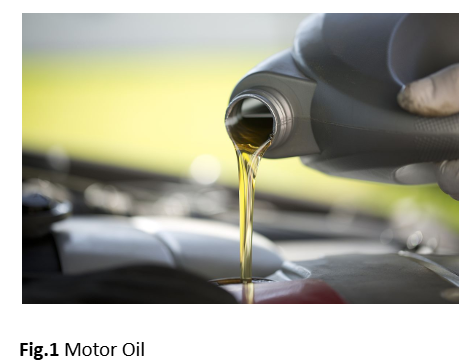Role of Technology and Energy Inefficiency
Role of Technology and Energy Inefficiency
This lesson aligns with NGSS PS3.D
Introduction
Energy inefficiency is one of the primary challenges in modern industrial, commercial, and household energy systems. Whenever energy is transformed from one form to another, a portion of the input energy is inevitably lost as waste heat. This article explores the key technologies that aim to tackle energy inefficiency by optimizing energy conversion processes, reducing waste heat, and ultimately improving sustainability across various sectors.
The Nature of Energy Inefficiency
Energy inefficiency primarily arises from the laws of thermodynamics, particularly the second law. This law explains why energy conversions can never be perfectly efficient. A portion of the energy will always be lost as heat due to friction, electrical resistance, or other forms of inefficiency inherent in energy transfer mechanisms.
For example:
- Combustion Engines: Internal combustion engines, like those in cars, typically convert only about 30% of the fuel's chemical energy into useful work. The remaining energy is lost as waste heat through exhaust gases and friction.
- Electrical Systems: In electrical grids and devices, resistance in conductors leads to heat generation, reducing the amount of electrical energy that can be efficiently used.
Advances in Machine Efficiency
The following advancements have made significant strides in improving energy efficiency:
1. High-Performance Materials
One of the most significant advances in machine efficiency comes from the development of high-performance materials. These materials are designed to reduce friction, wear, and energy loss, particularly in mechanical systems like engines and turbines.
- Lightweight Materials: The use of lightweight materials such as carbon fiber, aluminum, and high-strength steel in vehicles and machinery reduces the overall energy required to operate them. For example, lighter vehicles require less fuel to move, increasing fuel efficiency and reducing waste heat production.
- Advanced Alloys and Coatings: Materials like titanium alloys and ceramic coatings are being used to reduce friction and wear in high-stress environments such as aircraft engines and industrial machinery. These materials help maintain higher efficiency by minimizing energy loss due to friction and extending the lifespan of components.
2. Improved Lubrication Technologies
Effective lubrication reduces friction between components, thereby reducing energy losses and wear.
- Synthetic Lubricants: Modern synthetic oils and greases are more stable and effective than their traditional counterparts. They offer better resistance to high temperatures and pressures, which reduces friction in engines, turbines, and other machinery.

- Nanotechnology-Enhanced Lubricants: Nanotechnology is being used to create lubricants that contain nanoparticles, which further reduce friction and energy loss in machines. These advanced lubricants can operate under extreme conditions and help machines run more efficiently by minimizing heat generation due to friction.
3. Energy Recovery Systems
Several methods are being developed and implemented to reclaim lost energy, improving overall system efficiency.
- Regenerative Braking In electric vehicles, regenerative braking systems capture kinetic energy that would otherwise be lost as heat during braking and convert it into electrical energy. This energy is stored in the vehicle’s battery and reused, improving overall efficiency and reducing energy loss.
- Heat Recovery Systems: Waste heat recovery systems are being installed in industrial facilities, power plants, and even homes to capture excess heat generated during operations.
- Thermoelectric Generators: Thermoelectric generators (TEGs) convert waste heat into electrical energy by using the Seebeck effect. It occurs when a temperature difference between two materials generates an electric current.
4. Smart Automation and Control Systems
These systems use sensors, algorithms, and machine learning to adjust energy use based on load demand, operational conditions, and external factors, thereby minimizing waste.
- Smart Grids: In the energy sector, smart grids use real-time data and analytics to balance energy supply and demand more efficiently, reducing losses in power transmission and distribution.
- Industrial Automation: In manufacturing, smart automation systems monitor machine performance and adjust operations to ensure optimal energy usage.
5. Advanced Electrical Components
Energy inefficiency in electrical systems often arises from resistance in conductors, transformers, and other components. Advances in materials science and electrical engineering have led to the development of more efficient electrical components that minimize energy losses.
- Superconductors: Superconducting materials have zero electrical resistance at extremely low temperatures, which makes them ideal for reducing energy losses in power grids and industrial applications.
- Power Electronics: Innovations in power electronics, such as the use of silicon carbide (SiC) and gallium nitride (GaN) semiconductors, have led to more efficient power conversion and transmission. These materials offer lower resistance and faster switching speeds, reducing energy losses in devices like inverters and converters.
Conclusion
- Energy inefficiency primarily arises from the laws of thermodynamics, particularly the second law. This law explains why energy conversions can never be perfectly efficient.
- High performance materials are designed to reduce friction, wear, and energy loss, particularly in mechanical systems.
- Nanotechnology is being used to create lubricants that contain nanoparticles, which further reduce friction and energy loss in machines.
- Superconducting materials have zero electrical resistance at extremely low temperatures, which makes them ideal for reducing energy losses.
Related Worksheets:













